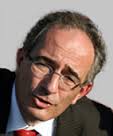
Eric Piaton
East Pathology Centre
Title: High-grade urothelial cancer risk in patients with atypical urothelial cells: a hospital-based database
Submitted Date: 5/27/2015
Biography
Born in 1958, Dr Piaton was trained in pathology at Lyon, France, and was then appointed full-time practitioner at the university hospital of Grenoble. There, he spent 6 years in pulmonary, central nervous system and urologic cytopathology. He took his MD degree in 1986 and his PhD in 1990. Since 1992, he is half-time assistant professor in histology and half-time pathologist at the Centre de Pathologie Est, Bron, with special interest and training in all organs except thyroid. He was secretary general of the French Society of Clinical Cytology, 2011-14. His current research focuses on markers applied to urothelial malignancy.
Abstract
Background: urine cytology (UC) is an accurate method in the search for high-grade urothelial carcinoma, with cyto-histologic correlation as high as 80-100%. Although an “atypical†or “suspicious†UC report carries a higher association with urothelial carcinoma in comparison with “reactive†or “negative†diagnoses, there remains great heterogeneity between the teams. The Paris System for Reporting Urinary Cytology (PS-UC, see http://paris.soc.wisc.edu/) currently in progress aims at creating a reliable system to identify patients who need immediate cystoscopy vs. those who can be followed at an interval based upon risk stratification.rnrnAim: to investigate whether atypical, non superficial urothelial cells (AUC) “of undetermined significance’’ and ‘‘cannot exclude high grade’’ (AUC-US and AUC-H, both candidates of the PS-UC) might be associated with a) concomitant high-grade urothelial cancer and b) increased high-grade cancer risk in the follow-up period. rnrnMethods: a hospital-based patient Excel database to describe the diagnostic (aim a) and prognostic (aim b) values of AUC-US and AUC-H cases. Individual data were collected from the DIAMIC database (Infologic-Santé, Valence, France) of the pathology laboratory information system, and from the Easily information system developed by the Hospices Civils de Lyon. Statistical methods included the online BiostaTGV analysis software, Chi-2 square and Fischer’s exact test, Kaplan-Meier method and log rank test.rnrnOverview and follow-up of data contents: demographic information including age, sex and birth date. Clinico-pathologic variables including cystoscopy, imaging techniques and histology. Treatment data (biopsies and TUR, bladder and upper tract surgery, BCG-, radio- and chemotherapy) including dates were recorded. Missing data being an issue, the database is regularly checked for data inconsistencies and completeness. rnrnInclusion period: July 1999 to December 2013. Follow-up until May 2014 (at least 6 months). Cases from January 2014 were not recorded at the date of writing.rnrnMain results: before exclusion, there were 474 AUC cases representing 1.6% of all UC reports, which is in accordance with our previous reports (1). After 94 cases (19.8%) have been excluded, there remained 294 AUC-US and 86 AUC-H cases in 237 patients. The predictive value of AUC-H for urothelial carcinoma (all grades) was 83.7%, vs. 73.5% for AUC-US (p = 0.04). Recurrence-free survival of patients with AUC-H was significantly shorter that that of patients with AUC-US (p = 0.007). Detailed results will be given to the Cytopathology-2015 conference.rnrnRelevant work: example publications: rn1. Cytopathology 2014; 25: 27-38 rn2. Acta Cytol. 57 (suppl 1), 11 (2013)rn3. Ann. Pathol. 2011; 31: 11-17rn

Tessy PJ
Government Medical College Ernakulam.India
Title: Cytopathology of salivary gland lesions with histopathological correlation. A two year study in a tertiary care centre in South India.
Submitted Date: 06/05/2015
Biography
Dr. Tessy PJ has completed her post graduation in Pathology from Mahatma Gandhi University and is presently working as a senior faculty in the Department of Pathology Government Medical College Ernakulam. She proved her merit as an expert in the field of Pathology and Laboratory Medicine and is an excellent academician. She is actively involved in diagnostic and research activities and has several publications in reputed national and international journals.rnrn
Abstract
Objective : To elucidate the cytomorphological features of various salivary gland lesions and explore the diagnostic accuracy and pitfalls of FNAC. rnMaterials and methods : 130 patients with various salivary gland lesions referred to the cytology lab of our institute over a period of two years were taken up for the study. FNAC was done with prior consent after recording the relevant clinical details. Only 61 patients who underwent surgery ultimately were included in the study.rnResults : In the present study, we obtained 130 cases of salivary gland lesions. The age range of the group varied from 1year to 88 years with a mean age of 45 years. Biopsy confirmation of diagnosis was available in 61 cases. Benign tumors constituted the largest category followed by malignant tumors and inflammatory lesions. Pleomorphic adenoma was the most common benign tumor and mucoepidermoid carcinoma was the most common malignant tumor in our study. The overall diagnostic accuracy of FNAC was 86.7% with a sensitivity of 56.3% and a specificity of 97.7% for detecting malignancy.rnConclusion: FNAC is a safe and economic procedure for preoperative evaluation and categorization of various salivary gland lesions. Proper sampling of lesions and adequate cellularity of the smears are the pre-requistes for an accurate diagnosis. Pitfalls in cytologic diagnosis were due to errors in sampling and interpretation of smears. This study highlights the utility of FNAC in distinguishing benign and malignant salivary gland tumors which are of utmost value in planning the further management of the patient.rn




